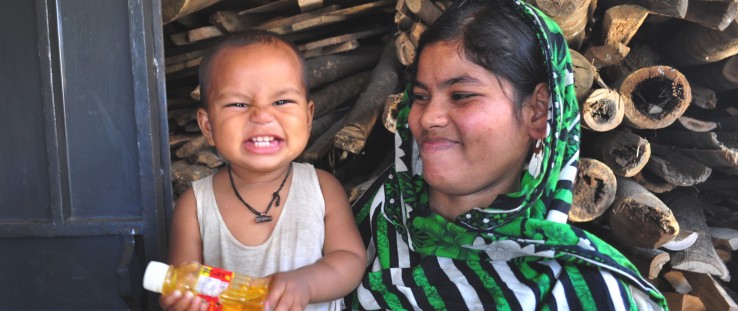 A mother with her toddler in Jospur village, northern Bangladesh. As an infant, this baby was born with complications and cared for at the first neonatal intensive care unit in Bangladesh, which is supported by USAID.
Amy Cotter, USAID
A mother with her toddler in Jospur village, northern Bangladesh. As an infant, this baby was born with complications and cared for at the first neonatal intensive care unit in Bangladesh, which is supported by USAID.
Amy Cotter, USAID
 A mother with her toddler in Jospur village, northern Bangladesh. As an infant, this baby was born with complications and cared for at the first neonatal intensive care unit in Bangladesh, which is supported by USAID.
Amy Cotter, USAID
A mother with her toddler in Jospur village, northern Bangladesh. As an infant, this baby was born with complications and cared for at the first neonatal intensive care unit in Bangladesh, which is supported by USAID.
Amy Cotter, USAID
Every day this year, 17,000 more children will live than each day in 1990. In countless villages across the globe, health workers, nurses, midwives and doctors protect the health and well-being of newborns and toddlers, expectant and new mothers, and other community members. They do simple and successful things like remove mucus from a baby’s mouth to prevent asphyxia, give a mother three tablets after birth to stop excessive bleeding, provide access to family planning to allow families to choose when and how many children to have, and counsel on the importance of insecticide-treated bednets.
In June 2012, the Governments of Ethiopia, India and the United States, in conjunction with UNICEF, joined together to host the “Child Survival: Call to Action.” The goal was simple—join together with governments, civil society and faith-based organizations to accelerate actions to end preventable child deaths in a generation. We are all working toward the goal of under 20 deaths per 1,000 live births by 2035. You may know this global commitment as “A Promise Renewed.”
Here at USAID, we’ve expanded this goal to also include ending preventable maternal deaths. While the death of a mother is a tragedy in itself, it has devastating effects for the survival of her children, the economic stability of the family, and the productivity of the community.
The vast majority of maternal deaths are preventable when women have access to quality ante- and post-natal care, along with a safe delivery environment attended by skilled personnel and backed by emergency obstetric care. Ending preventable maternal deaths in a generation is also within our reach, but progress must be accelerated. We are working to achieve less than 50 maternal deaths per 100,000 live births by 2035.
Almost two years have passed since the Call to Action. We are celebrating our progress, yet much remains to be done. We have worked closely with many country governments to help sharpen national plans, actions and goals, and we are collaborating closely with development partners to align our in-country efforts for greater effectiveness and efficiency.
In this issue of FrontLines, we’re highlighting some of the progress since the Call to Action, as well as a selection of new programs and technologies that will help us continue to improve and accelerate progress toward our 2035 goals.
In particular, I’m excited about the new focus the global community is placing on newborns. Neonatal mortality accounts for 44 percent of under-5 mortality. Although we have seen incredible success in bringing down under-5 deaths, neonatal mortality rates have declined at a slower pace. This is in part because the leading causes of newborn mortality—prematurity, asphyxia and sepsis—are sometimes harder to diagnose and treat than leading causes of mortality in older children under age 5.
One of the partnerships USAID helped launch, Helping Babies Breathe, provides basic training and equipment for skilled birth attendants and community health workers to resuscitate babies in the first few minutes after birth. Learn how Helping Babies Breathe and a special piece of equipment—called a “penguin sucker” in some parts of the world—are driving down neonatal mortality in Malawi.
As part of our efforts to focus on newborn health, we’ve been hard at work with partners to develop the Every Newborn Action Plan, which will be launched at the Partnership for Maternal, Newborn and Child Health Forum at the end of June. This is the first plan to unite the global community around progress toward newborn health outcomes—it is both a historic moment and opportunity. The plan outlines a practical strategy to address newborn mortality, outlines tactics and milestones, and yet leaves room for national and local autonomy.
The Every Newborn Action Plan has allowed countries to mobilize around it during its development, and now will allow them to adopt and implement it. This is an exciting next step in saving the 2.9 million babies that die every year during their first month of life, and helping to avoid the 2.6 stillbirths per year.
In talking about great progress in child survival over the past year, let us also compliment the Government of Ethiopia and all of the parties that helped that nation achieve Millennium Development Goal 4, and reduce child mortality by two-thirds, two years earlier than anticipated. We discuss the strong community health system that helped reach this impressive milestone.
Technology has helped drive progress and will continue to do so as we move forward. The Mobile Alliance for Maternal Action, or MAMA, is a great example of this. Capitalizing on the prevalence of mobile device use, the program sends regular text or voice messages to pregnant women and mothers about healthy behaviors. Pregnant women receive texts about delivery in a health facility and mothers learn things like the importance of immunizations and exclusive breastfeeding. In Bangladesh, this program is called Aponjon, which means “dear one.” Meet one subscriber to the Aponjon service and learn how it has improved the health of her baby.
Innovation, country leadership and collaboration have helped accomplish historic gains in child and maternal survival and health. Yet around 6.6 million children and 287,000 mothers still lose their lives every year. That translates to 18,000 children under the age of 5 and 800 pregnant women or women in childbirth dying every day—or 36 children dying in the three minutes it may have taken you to read this.
This summer, let us celebrate the accomplishments we’ve achieved by working together; yet let us also consider this a rally on our fight to end preventable child and maternal deaths. We must focus and speed up our efforts on what we know works and can be sustained. It is our hope that these stories from the “frontlines” will inspire you and others to do more.
Related Link
In September, USAID partnered with six international agencies and the Government of Panama to launch “A Promise Renewed for the Americas,” focused on improving maternal, child and reproductive health among poor, indigenous and marginalized groups in Latin America and the Caribbean. While most countries in this region are on track to meet national targets for 2015 Millennium Development Goals 4 and 5, vulnerable groups within many countries still lag behind. More than 180,000 children under age 5 and more than 9,000 mothers die annually in the region unnecessarily. The renewed effort is addressing these inequalities by scaling up evidence-based interventions, promoting universal health coverage, and fostering South-South partnerships to advance solutions.







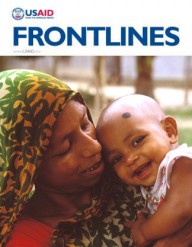

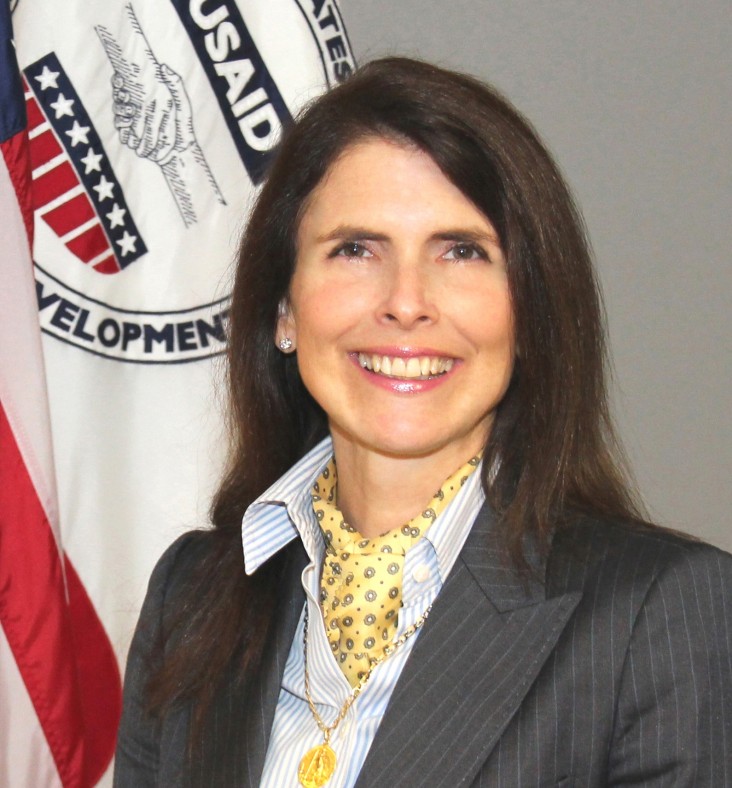
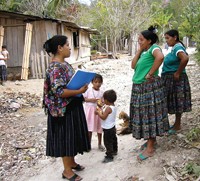

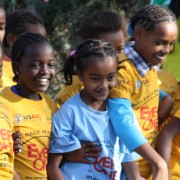
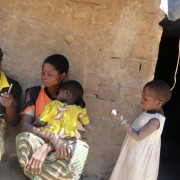
Comment
Make a general inquiry or suggest an improvement.